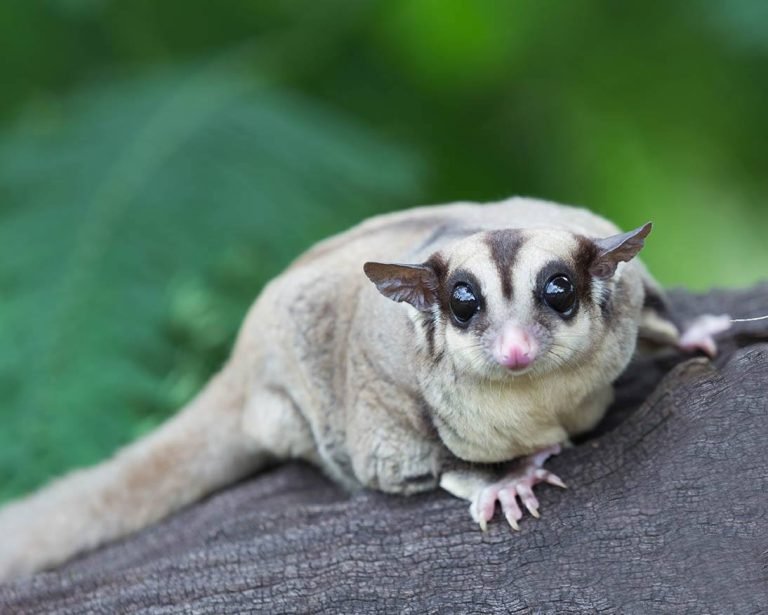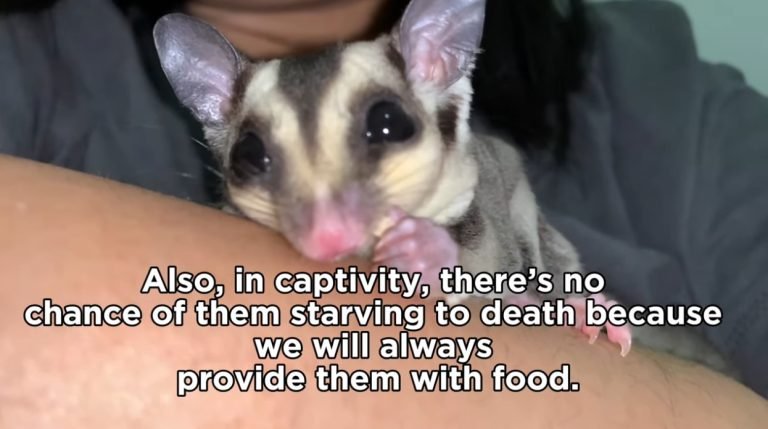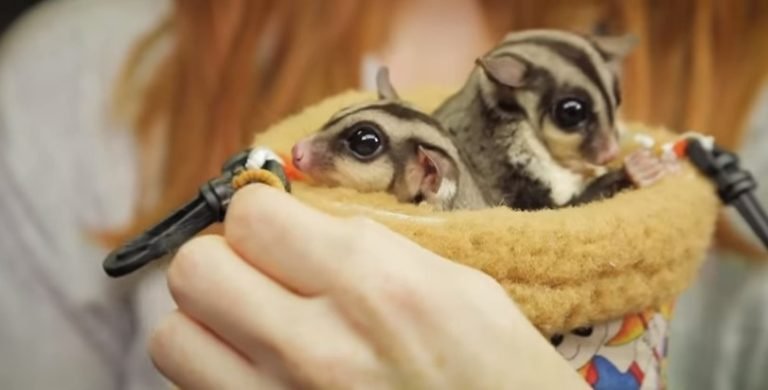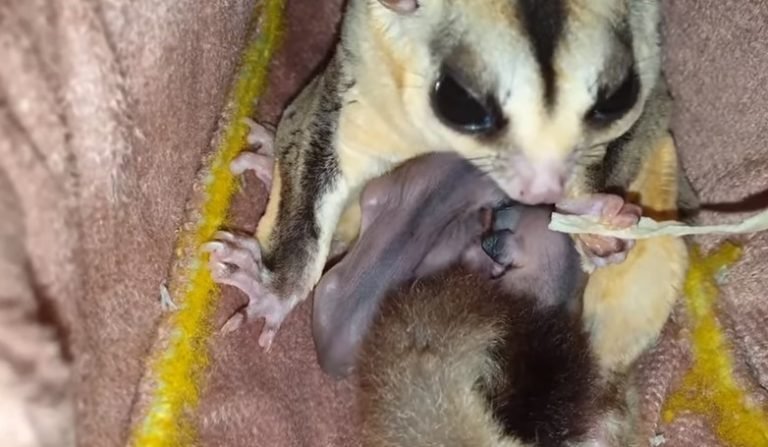How Long Do Sugar Gliders Sleep
Ever wondered how long sugar gliders sleep? These tiny marsupials, also known as sugar gliders, are fascinating creatures with unique sleep habits. They are nocturnal animals, meaning they are most active during the night and tend to sleep during the day.
Sugar gliders have adapted to their nocturnal lifestyle in order to avoid predators and find food more easily. They form social groups and build nests where they rest during the daytime, only venturing out when darkness falls. Understanding their sleep patterns is crucial for providing them with a suitable environment as pets. In this blogpost, we will discuss how long do sugar gliders sleep.
We’ll explore why these adorable creatures are so active at night, how long they typically sleep, and what factors influence their sleeping habits. So let’s dive in and uncover the secrets of these fascinating little gliding marsupials!
Sleep duration of sugar gliders
Sugar gliders, those adorable little creatures, love their sleep. On average, they snooze for about 12 to 14 hours each day. However, it’s important to note that their sleep duration can vary based on several factors.
Age, health, and environmental conditions all play a role in how long sugar gliders sleep. Younger gliders tend to require more shut-eye than adults, while any underlying health issues may affect their sleep patterns as well. The environment they are in can impact their restfulness.
To ensure the well-being of these nocturnal marsupials, providing them with a quiet and comfortable sleeping area is crucial. Creating a peaceful space where they can unwind undisturbed will contribute to their overall happiness and contentment.
Sleeping habits and preferences of sugar gliders
Sugar gliders, those adorable little creatures, have some interesting sleep habits that every sugar glider owner should know. Let’s dive into their sleep behavior and find out how long these tiny marsupials rest.
- Sugar gliders prefer to sleep in cozy pouches or nests that mimic their natural habitat. Providing them with a soft and warm sleeping area will help them feel safe and secure during their slumber.
- These nocturnal animals have a strong instinct to snuggle up together while sleeping, often forming cuddle piles. It’s not uncommon to see many sugar gliders huddled together for warmth and comfort.
- Offering multiple sleeping options within their enclosure allows them to choose their preferred spot. This could include providing different types of pouches or nests, giving them the freedom to select the coziest spot for their naptime.
Understanding the sleep habits of baby sugar gliders is also essential for their well-being:
- Baby sugar gliders require more sleep compared to adults. They spend most of their early days snoozing away, growing and developing.
- Just like adult sugar gliders, baby sugar gliders enjoy sleeping in pouches or nests. Providing a smaller-sized sleeping area specifically designed for the young ones can ensure they get the rest they need.
Factors affecting sugar gliders’ sleep patterns

- Temperature: Sugar gliders’ sleep patterns are significantly influenced by temperature. They prefer warmer environments, which help regulate their sleep cycles.
- Noise disturbances: Sugar gliders can be easily disturbed by noise, so it’s important to keep their surroundings peaceful. Loud sounds or sudden noises can disrupt their sleep and affect their overall well-being.
- Stress: Stressful situations or changes in routine can also impact the quality and duration of sugar gliders’ sleep. These small creatures are sensitive to changes in their environment, and high-stress levels can lead to restless nights.
It is crucial to consider these factors. Providing a warm and quiet sleeping area will go a long way in promoting healthy sleep patterns for your furry friend. Minimizing stressors in their environment will contribute to better sleep quality.
By creating a comfortable space with suitable temperature levels and reducing noise disturbances, you can create an ideal sleeping environment for your sugar glider. This will help them get the rest they need to stay happy and healthy.
Cleaning and maintaining sugar gliders’ sleeping pouches
Regularly cleaning and maintaining the sleeping pouches is crucial for keeping sugar gliders comfortable and hygienic. Odor buildup can be prevented, ensuring a fresh and safe place for them to rest.
To clean the sleeping pouches effectively, it is recommended to use a mild detergent specifically designed for small animals. This ensures that the cleaning process is safe and gentle, without any harm to the sugar gliders.
In order to provide continuous comfort while cleaning, it’s advisable to have extra pouches available. By rotating the pouches, sugar gliders will always have a fresh place to nestle in. This not only maintains their hygiene but also gives them a sense of security.
Apart from traditional sleeping pouches, nesting boxes can also be used as an alternative option. These boxes provide additional space for sugar gliders to sleep comfortably. It’s important to fill these boxes with suitable nesting materials such as fleece or wood chips, creating a cozy environment resembling their natural habitat.
By following these simple steps in caring for their sleeping areas, sugar glider owners can ensure that their furry friends always have a clean and safe place to rest.
Adjusting a Sugar Glider’s Sleep Schedule

Adjusting a sugar glider’s sleep schedule can be done with a little patience and some simple changes. Here are some tips to help you get started:
Gradually shifting the lighting schedule
- Gradually shift the lighting schedule to adjust their natural nocturnal rhythm if necessary.
- Make small changes over time, such as delaying the time you turn on or off the lights.
- This gradual adjustment will help your sugar glider adapt to a new sleep schedule.
Ensuring adequate darkness during daytime hours
- Ensure that your sugar glider receives enough darkness during the daytime.
- Cover their enclosure or move them to a darker room during daylight hours.
- This promotes better quality nighttime activity and sleep for your furry friend.
Seeking guidance from experts
- Consult with a veterinarian or experienced sugar glider owner for advice on adjusting their sleep schedule.
- They can provide valuable insights and recommendations based on their expertise.
- These experts can guide you through any necessary changes and answer any questions you may have.
Adjusting a sugar glider’s sleep schedule requires some effort, but it is worth it to ensure they are getting the rest they need. With a few adjustments and guidance from experts, you can create a new sleep schedule that fits both your sugar glider’s needs and your lifestyle.
Final Thoughts
Understanding the sleep patterns of sugar gliders is essential for their overall well-being. By summarizing the key points discussed in this article, you can ensure that your furry friend gets the rest they need.
Sugar gliders typically sleep for around 12 to 14 hours a day. They are nocturnal creatures, meaning they are most active during the night and sleep during the day. It is important to provide them with a quiet and dark environment to promote uninterrupted sleep.
Sugar gliders have unique behaviors. They often prefer sleeping in cozy pouches or nests, which mimic their natural sleeping habitats in trees. Regular cleaning and maintenance of these sleeping pouches are crucial to prevent any hygiene issues.
Several factors can affect sugar gliders’ sleep patterns. Temperature, lighting conditions, noise levels, and even stress can impact their ability to rest properly. As a responsible owner, it’s essential to create an ideal sleeping environment by regulating these factors.
If you need to adjust your sugar glider’s sleep schedule for any reason, remember that patience is key. Gradually introduce changes rather than abruptly altering their routine. This approach will help them adapt more easily.
In conclusion, understanding how long sugar gliders sleep and catering to their specific needs ensures they lead healthy lives filled with adequate rest. By providing a suitable environment and addressing any potential disruptions, you can contribute to your pet’s overall happiness and well-being.
FAQs
1.How do I clean my sugar glider’s sleeping pouch?
To clean your sugar glider’s sleeping pouch, start by removing any loose bedding or debris inside. Then wash it using mild detergent and warm water. Rinse thoroughly and make sure it is completely dry before placing it back in the cage.
2.Can I use different types of bedding for my sugar glider’s sleeping pouch?
Yes! You can choose from various options such as fleece fabric or shredded paper bedding. However, ensure that the material is safe for your sugar glider and does not pose any choking hazards.
3.Is it normal for sugar gliders to sleep during the day?
Yes, sugar gliders are nocturnal animals, so it is normal for them to sleep during the day and be active at night. Their sleep schedule aligns with their natural instincts.
4.How can I create a quiet sleeping environment for my sugar glider?
To create a quiet sleeping environment, place your sugar glider’s cage in a calm area away from loud noises or disturbances. Close curtains or blinds to darken the room and minimize external stimuli.
5.Why does my sugar glider wake up during the night?
Sugar gliders may wake up during the night due to various reasons such as hunger, thirst, discomfort, or even boredom. Ensure they have access to fresh food and water before bedtime and provide them with stimulating toys to keep them engaged.
6.Can I adjust my sugar glider’s sleep schedule?
While it is possible to adjust your sugar glider’s sleep schedule slightly, remember that they are naturally nocturnal animals. It may be challenging to alter their instincts completely. Gradual changes over time can help them adapt better without causing undue stress.







